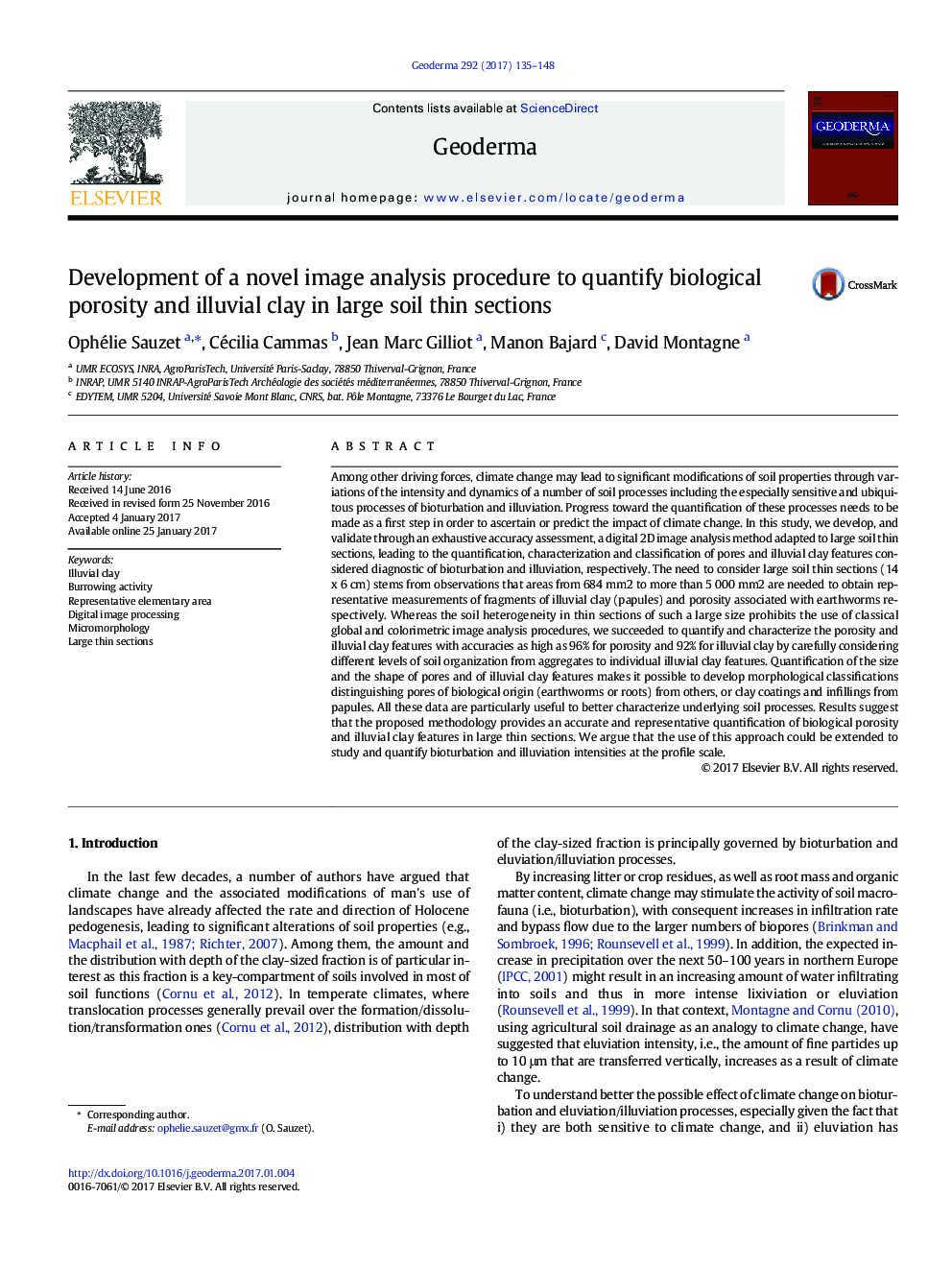| Article ID | Journal | Published Year | Pages | File Type |
|---|---|---|---|---|
| 5770701 | Geoderma | 2017 | 14 Pages |
â¢Combining color and textural attributes makes it possible to isolate illuvial clay.â¢Accuracies as high as 96% for porosity and 92% for illuvial clay are achieved.â¢Earthworm porosity (areal percentage) should be studied on images larger than 5225 mm2.â¢Exhaustive morphological attributes of illuvial clay are quantified for the first time.â¢Morphological classifications are helpful to understand bioturbation and illuviation.
Among other driving forces, climate change may lead to significant modifications of soil properties through variations of the intensity and dynamics of a number of soil processes including the especially sensitive and ubiquitous processes of bioturbation and illuviation. Progress toward the quantification of these processes needs to be made as a first step in order to ascertain or predict the impact of climate change. In this study, we develop, and validate through an exhaustive accuracy assessment, a digital 2D image analysis method adapted to large soil thin sections, leading to the quantification, characterization and classification of pores and illuvial clay features considered diagnostic of bioturbation and illuviation, respectively. The need to consider large soil thin sections (14 x 6 cm) stems from observations that areas from 684 mm2 to more than 5 000 mm2 are needed to obtain representative measurements of fragments of illuvial clay (papules) and porosity associated with earthworms respectively. Whereas the soil heterogeneity in thin sections of such a large size prohibits the use of classical global and colorimetric image analysis procedures, we succeeded to quantify and characterize the porosity and illuvial clay features with accuracies as high as 96% for porosity and 92% for illuvial clay by carefully considering different levels of soil organization from aggregates to individual illuvial clay features. Quantification of the size and the shape of pores and of illuvial clay features makes it possible to develop morphological classifications distinguishing pores of biological origin (earthworms or roots) from others, or clay coatings and infillings from papules. All these data are particularly useful to better characterize underlying soil processes. Results suggest that the proposed methodology provides an accurate and representative quantification of biological porosity and illuvial clay features in large thin sections. We argue that the use of this approach could be extended to study and quantify bioturbation and illuviation intensities at the profile scale.
